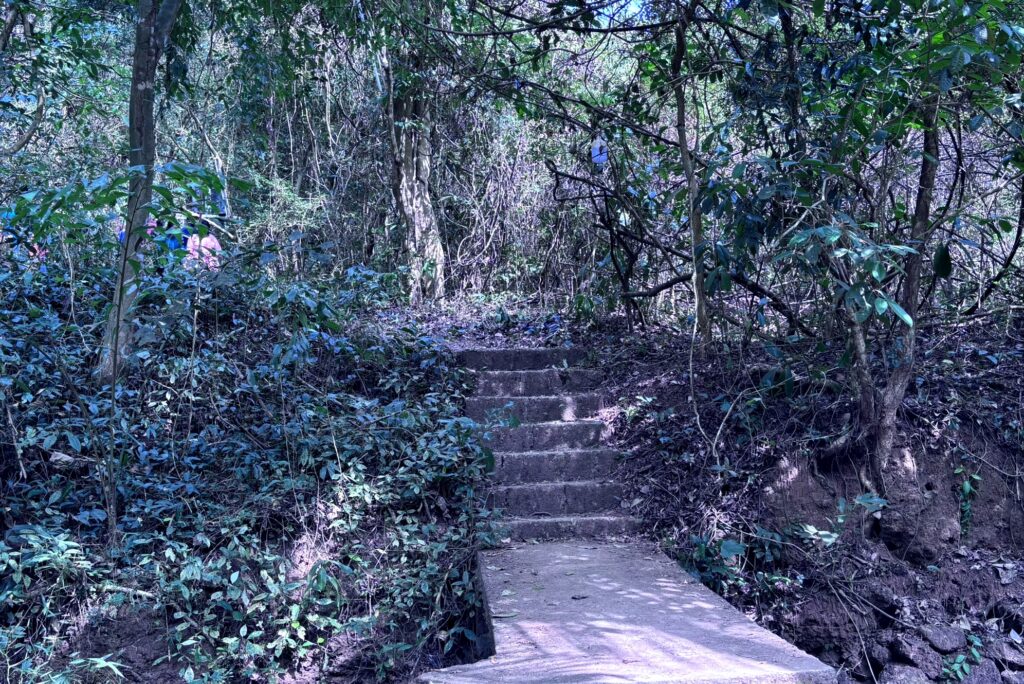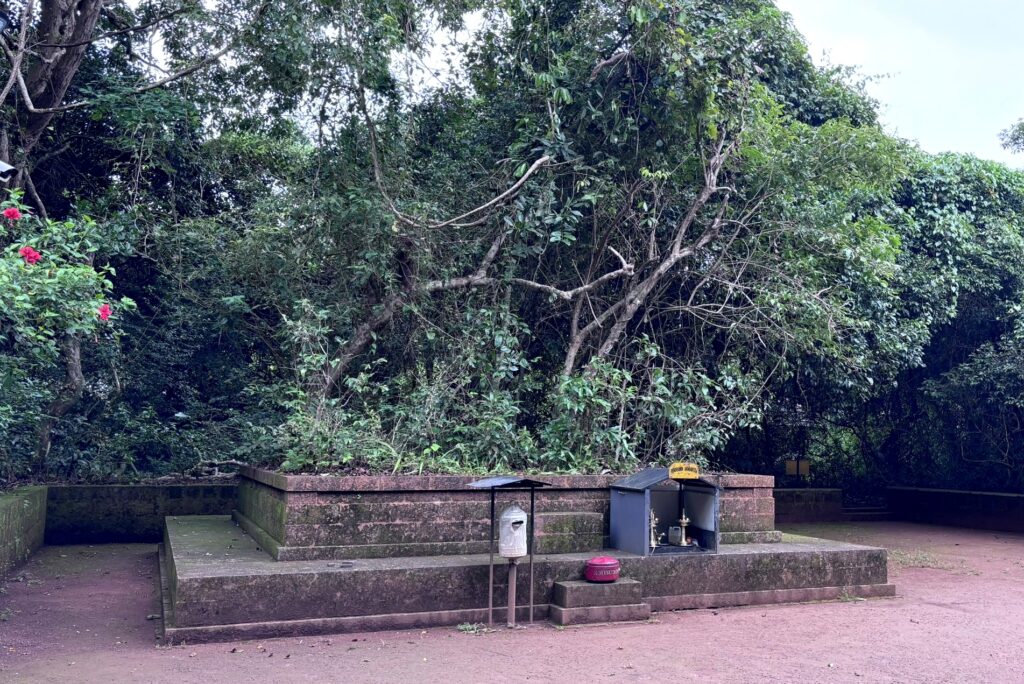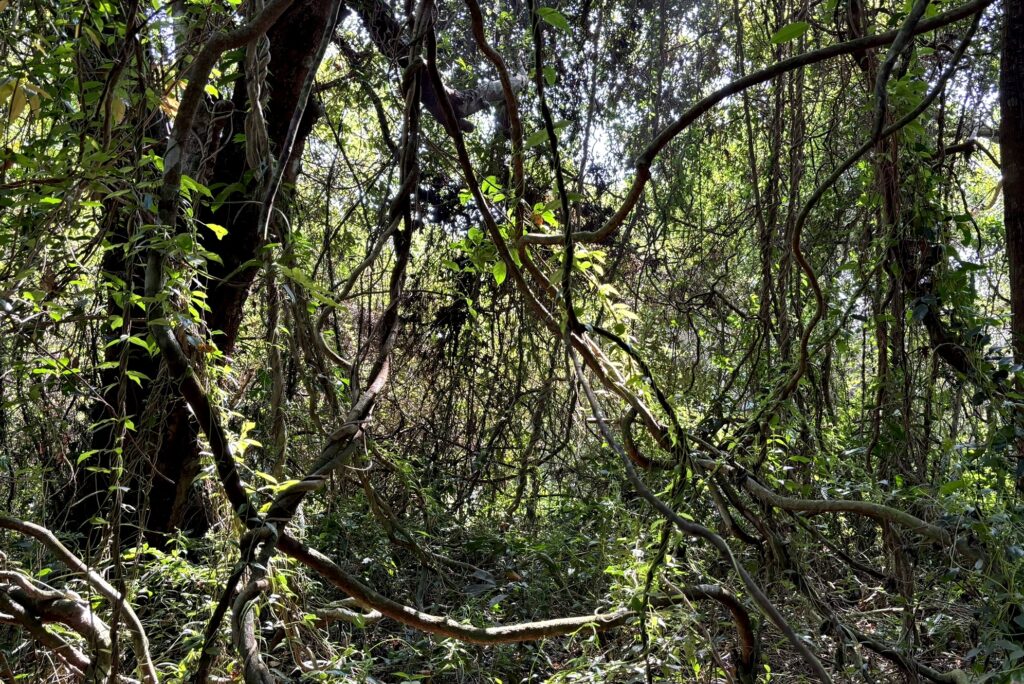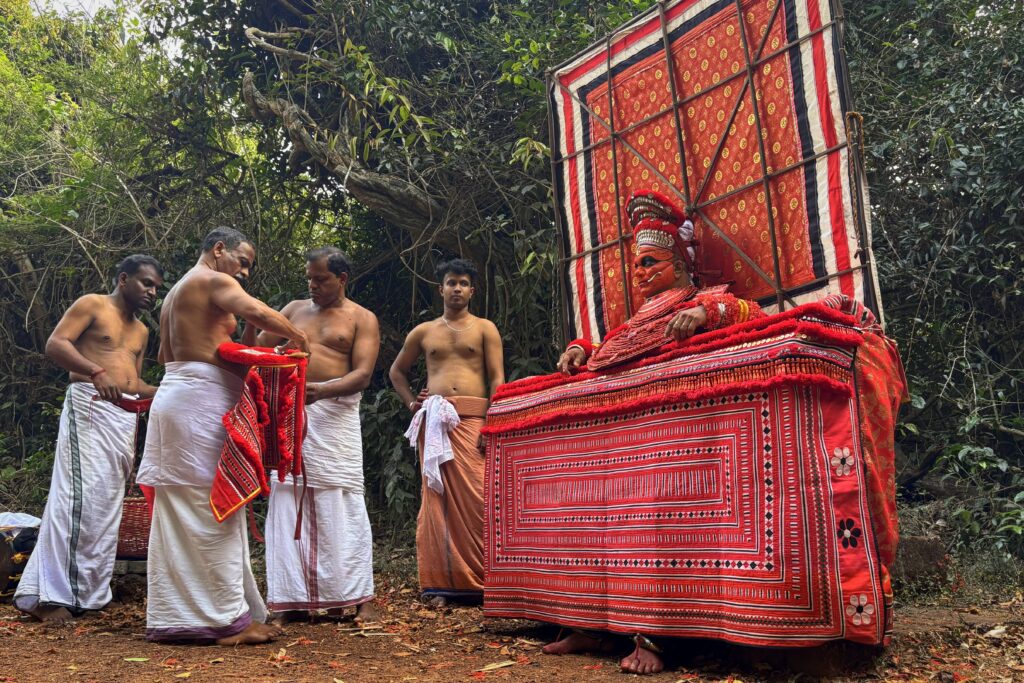Whispers in the Groves
The Sacred Forests of North Kerala
If you ever wander off the winding village roads of North Kerala—past the swaying coconut palms and laterite walls streaked with moss—you may stumble upon a space that feels like it holds its breath. A patch of dense green, darker than its surroundings. Quiet, yet pulsing with something old and unseen.

This is not just a forest fragment. It is a kavu—a sacred grove. Here, even the breeze seems to slow down. The air is heavier with damp earth, fallen leaves, and the quiet awareness that you’ve entered a place the locals believe is not quite theirs to claim.

In many villages, groves are set aside specifically for serpent deities—the Nagams. Nobody plants or cuts anything here. No leaves are swept. No rituals are performed without permission, whispered in prayer. The grove belongs to the snakes, to the spirits, and to those who come once a year to remember them. These spaces are called by names that echo through oral traditions: Chamakavu, Parappool Kavu, Kunhimangalam Kavu, Kammadan Kavu, Deviyottu Kavu, Thaliparamba Kavu, Perumthrikovil Kavu, Karivellur Kavu, and many more. Each carries a specific lore, a set of rituals, and a deity with its own temperament.

Once a year, during the dry months, the grove awakens in a blaze of ritual fire. The drummers arrive. Torches are lit. And in the deepest hours of the night, a man—painted in vivid reds or masked in green—emerges from the darkness, transformed. This is Theyyam.

But Theyyam is not performance. It is possession. It is the moment when the divine descends into a human form, and a village stands in reverence before it. The grove becomes, for a few hours, a place suspended between the earthly and the divine. The trees witness it. The ancestors return. And for those who gather around the ritual fire, time itself seems to pause.
During the rest of the year, these groves are quiet, but never empty. Their dense foliage shelters an astonishing diversity of life—fragments of Kerala’s original forest cover, preserved in silence. Towering native trees like Artocarpus hirsutus, Hopea ponga, and Syzygium travancoricum form thick canopies. Creepers twist around their trunks. Wild medicinal herbs flourish undisturbed—Aadalodakam, Kaithachakka, Kandankathiri.
Look closer, and the grove reveals its secrets. The brilliant flash of a Southern birdwing butterfly. The startled leap of a Malabar gliding frog from a damp leaf. The patient gaze of a slender loris at dusk. Birds like the Malabar grey hornbill, Asian koel, and Indian paradise flycatcher make their homes here. Beneath the surface, the sacred ponds nestled in many groves quietly recharge groundwater, support amphibian life, and help regulate the local microclimate.
These are more than just natural benefits. They are sacred responsibilities, protected for generations not by environmental laws, but by stories, rituals, and taboos. To damage a kavu is not seen as environmental harm—it is an act of sacrilege. And in a world where forests vanish overnight, that belief can be a powerful shield.
Still, not all groves have survived. Some have been fenced, trimmed, even erased—sacrificed to roads, houses, and changing values. But many endure, because people choose to remember. In some villages, youth groups now work to restore their groves, bringing back native trees, reviving rituals, and recording oral histories. Others protect their kavu simply by continuing the cycle—by waiting for the drums, lighting the torches, and preparing to meet the god once again.
The sacred groves of North Kerala are among the most intimate examples of culture becoming conservation. They exist at the intersection of faith, folklore, and ecology. They hold memory in leaf and root. They remind us that sometimes, the best way to protect nature is to believe in it so deeply, you dare not disturb it.
At Ekathra, we walk gently into these spaces. Not as tourists, but as listeners. Because in the hush of a kavu, amid the rustle of leaves and the echoes of drums long gone, there are stories still waiting to be heard.